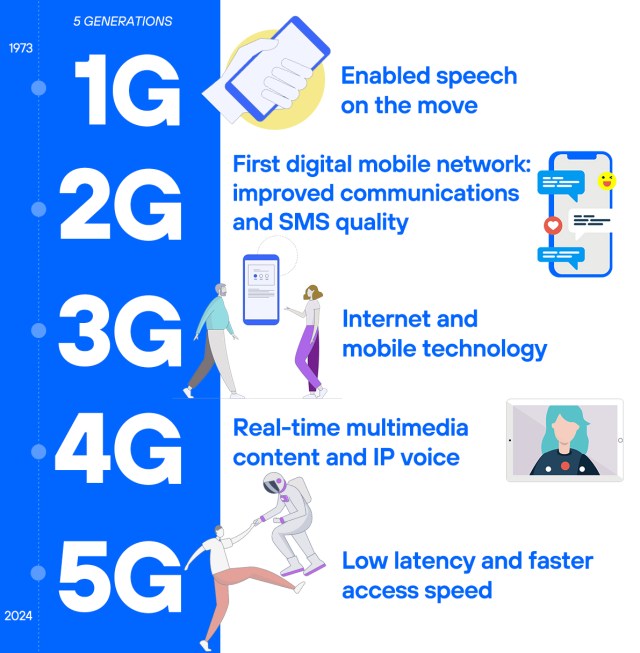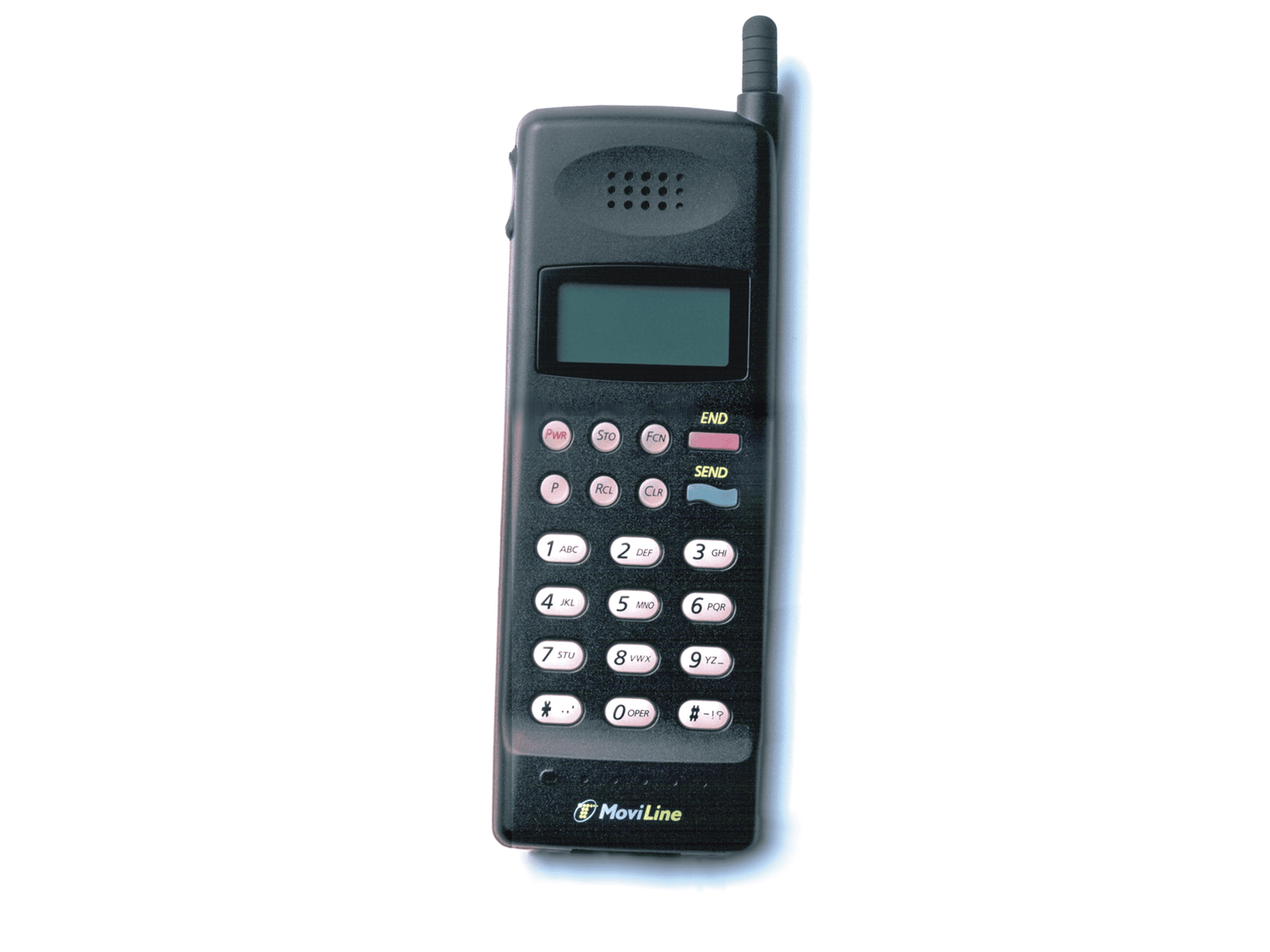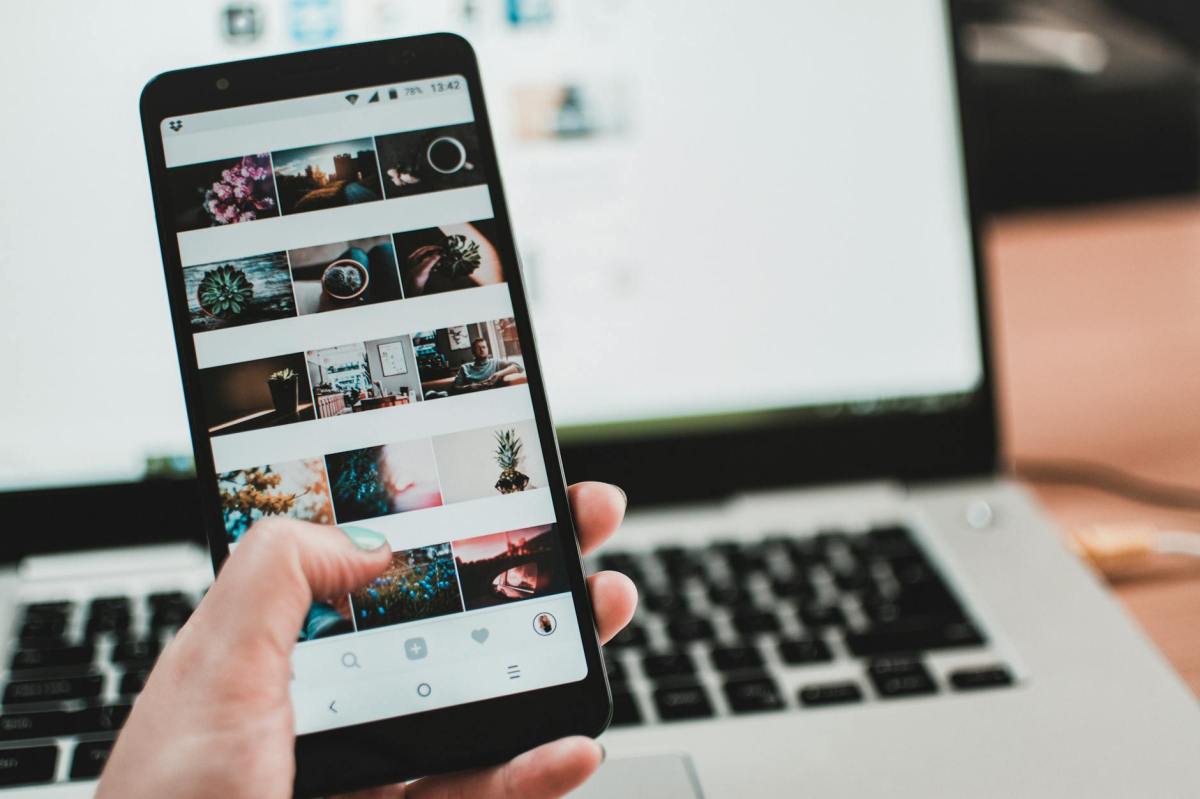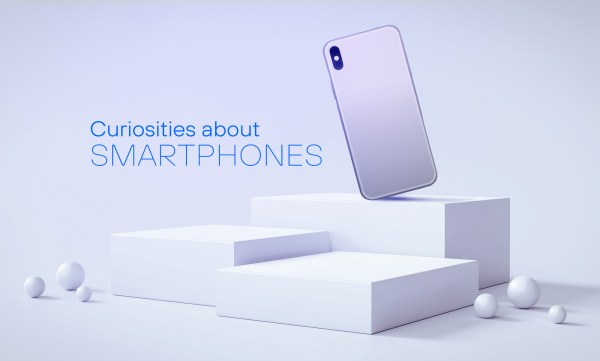Since the first mobile phone call in 1973, the evolution (and revolution) of this technology has substantially changed almost every aspect of our lives.
Mobile devices have gone from being something exclusive and accessible to very few people due to their high cost to the fact that there are currently more mobile connections than people in the world, according to data from this very year 2024.
A cultural change for the time that led us to have to change the question we asked when we picked up the phone (from literally to metaphorically): from calling the landline and asking if the person we wanted to speak to could be reached to calling the mobile phone and asking the person in question directly where they were.
As in many other technological advances related to the world of telecommunications, Telefónica’s century of life has meant that the company has been a co-protagonist.
History of mobile telephony
In short, we could explain that the history of the mobile phone has experienced five different generations in a short space of time.
While it is true that for a time they were known by the acronyms of what they stood for (TMA, CDMA, GPRS, GSM, UMTS or LTE), popularly they have ended up acquiring as their name the number of the generation we are referring to; i.e. 1G, 2G, 3G, 4G and 5G.
Generally speaking, and as can be seen in our Centenary book, the 1G mobile network, the analogue one, was the one that offered the novel possibility of talking on the move.
Later, 2G was the first digital mobile network: it improved the quality of communications. Among other things, it brought us SMS, a communication tool that was enormously popular in the 1990s and 2000s and which started with a Christmas greeting in 1992.
3G was the confluence of two of the great revolutions of our time: mobile technology and the internet. Thanks to this union, innovations such as messaging services and email on mobile devices became possible.
Subsequently, 4G allowed access to multimedia content in real time and voice over IP (VoIP) and 5G has been accompanied by low latency and faster access speeds.

Telefónica brings mobile telephony to Spain… in the back of the boot
Telefónica brought mobile telephony to Spain half a century after the company’s birth.
The fiftieth anniversary of Telefónica saw the presentation of the first mobile system in Spain, Motorola’s IMT-200, known as TAV (Automatic Telephony in Vehicles). As its name suggests, it was a mobile telephony system that could not be taken out of the car as the heavy terminals were built into the boot and worked in the 200 MHz frequency band.
They were equipped with an external antenna and a microphone with a keypad or dialer located on the armrest.
The references to the company’s 50th birthday linked to this technology are not gratuitous, since it was precisely in 1974 that the HST was the star of a commemorative exhibition on innovations that would define the future, along with fibre optics and a very primitive videophone.
Three years later, this service already had 400 subscribers.
The 1990s: a star is born
Although mobile telephony technology had arrived in the 1970s, as we have just seen, it was not until the 1990s that its use exploded.
In the case of Spain, it was precisely in 1990 that MoviLine was born, within the framework of 1G, the first analogue mobile telephony brand to become popular. A brand and a service that continued until 2004.

In the middle of the decade, in 1995, Movistar was born. Specifically, in September of that year, and under the advertising campaign ‘A star is born’ (‘Ha nacido una estrella’, in Spanish), in barely a year it had already reached one million customers.
Compared to a 1G where MoviLine had no competition, GSM (i.e. 2G) would have competition. Specifically, Airtel in 1995. In 1998, the third operator in the Spanish mobile market appeared: Amena.
New features of the 2G mobile network included the use of the SIM card (where customer data was stored and which personalised any mobile device in which it was inserted), the identification of the calling number, roaming in other countries such as roaming, and a novelty we have already mentioned, SMS. The only data transmission element of this network, designed solely for voice, was the royal wedding and 2G.
Royal wedding and 2G. What do they have to do with each other?
As we have just mentioned, 2G in Spain had two operators when it started operating. Until this second operator – Airtel, as mentioned above – was ready, the administration did not allow Telefónica Móviles to operate, despite the fact that it had been ready since January 1995.
However, the wedding of Her Royal Highness the Infanta Elena in Seville in March of the same year led to Telefónica Móviles being granted a ‘special authorisation’ (which ended when the event did) to temporarily open the GSM network to allow guests from other countries (who already had 2G in operation) to use their mobiles.











